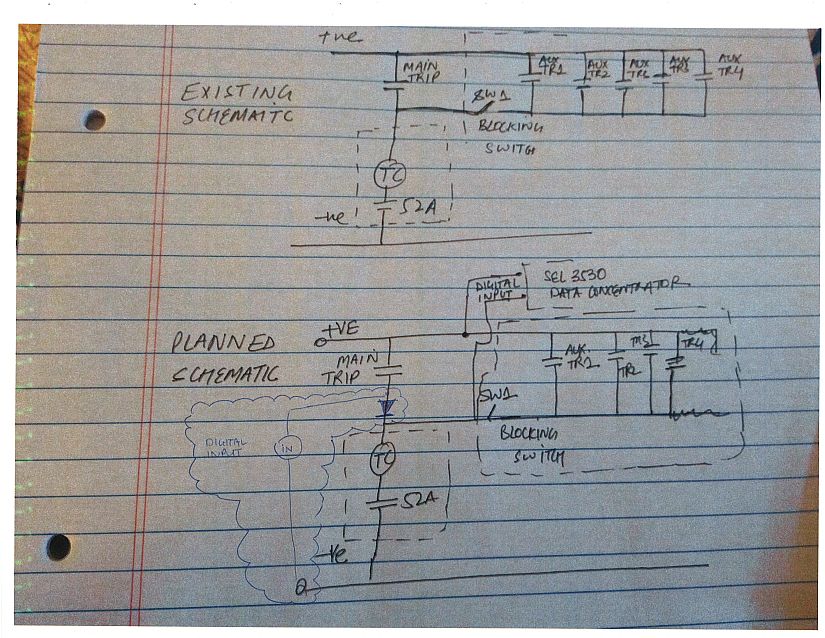Hi,
This might be more of a controls related question. I have attached a pictures which has two schematic.
1. Existing Schematic
2. Planned Schematic
My Distribution utility shares substation with the transmission utility. Bus protection and bus is owned by transmission utility but our distribution utility owns the feeders and its associated protection.
Existing Schematic shows the main trip that is from the feeder relay and Aux Trip1,Aux Trip 2, 3 & 4 show coming from the transmission utility to trip our breaker directly. These trips could be from Bus diff., bus back up or any other protection scheme. Blocking is shown to block tran.utility trip.
My objective is to determine if transmission utility issued a trip to my breaker, and that is shown in the Planned Schematic. it is like taking + ve and -Ve and then feeding to a digital controller just to detect if a trip was issued from transmission utility.
But I dont want to detect my own trip because my relay would tell me that. Would this work ? Any suggestions please.

